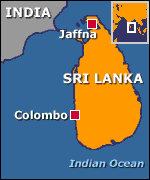 During those decisive years in the middle of the last century, there was a spate of rapid development in the radio scene on the island of Sri Lanka, or Ceylon as it was known in those days. This is what happened.
During those decisive years in the middle of the last century, there was a spate of rapid development in the radio scene on the island of Sri Lanka, or Ceylon as it was known in those days. This is what happened.In the year 1943, the BBC in London began the broadcast of a forces radio program for the benefit of English servicemen on duty in India. Shortly afterwards, the production and broadcast of this program was transferred to All India Radio in Delhi. Then it was that Lord Louis Mountbatten moved the headquarters of his South East Asia Command to Ceylon, first in Kandy and then in Colombo.
While the headquarters were located in Kandy, an English army transmitter was used as a broadcast service, and also for the relay of voice broadcasts back to the BBC in London. This station was on the air from October 1944 until early in 1946.
Around the same time, the American forces in Kandy established their own entertainrnent radio station. This was a small 50 watt unit which was on the air without callsign on the mediumwave channel 1355 kHz. This somewhat unofficial AFRS station was launched in August 1944, and it was on the air for a little over a year.
When the SEAC headquarters were transferred to Turret Road in Colombo, a production studio was installed, and a program service was commenced over a 7.5 kw shortwave transmitter with the callsign ZOJ. We could guess that this transmitter was co-sited with the Radio Ceylon transmitter ZOH at Welikada on the edge of Colombo.
In the meantime, work began on the construction of a big new shortwave station at Ekala, some twenty miles north of Colombo. However, on a temporary basis, a new 7.5 kw RCA unit was installed in the transmitter hall at the Royal Signals base adjacent to the new station. One of the Marconi communication transmitters at this location was hurriedly pressed into service for the opening ceremonies of the new facility on April 25, 1945.
Work continued on the big new station, and on May 1, 1946 the Marconi 100 kw entered regular service. Soon afterwards, three RCA units at 7.5 kw and one at 1 kw were co-installed with the ìBig One.î The little 1 kw unit carried the SEAC service for listeners within Ceylon.
The large 100 kw Marconi was heard almost worldwide, and at certain times each day it carried a relay from the BBC. During the cricket season in Australia, the SEAC transmitter acted as an intermediate relay from Radio Australia in Shepparton to the BBC in London.
The SEAC station at Ekala was in use for forces programming for a period of four years, and then the whole facility was handed over to Radio Ceylon, with cooperation and input from the BBC. The first regional director for the BBC in Ceylon was a man who had been a prisoner of war in Singapore, James Mudie. (He was a relative of mine.)
SEAC Colombo was noted as a very reliable verifier, and their black and white card was considered at the time to be quite plain, though today it is a valued possession. Source:http://www181.pair.com/otsw/Wavescan/wavescan445.html